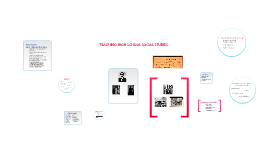Best Practice Presentation
Transcript: What is the BGCE doing about it? Developing Evidence Based Best Practice Policies Other Benefits of support groups Resources (2006). The Support Group Method. Blair Bullies Anti-Bullying Alliance. Retrieved from http://www.uk.sagepub.com/repository/binaries/pdf/The_Support_Group_Method.pdf Bray, L. Lee, C. (2007). Moving Away from a Culture of Blame to that of Support-Based Approaches to Bullying in Schools. Pastoral Care, 4-11. Conners-Burrow, N. Gargus, R. Johnson, D. McKelvey, L. Whiteside-Mansell, L. (2007). Adults Matter: Protecting children from the negative impacts of bullying. Psychology in the Schools, 46(7), 593-604. Howard, S. Smith, P. K. Thompson, F. (2007). Use of the Support Group Method to Tackle Bullying, and Evaluation From Schools and Local Authorities in England. Pastoral Care, 4-13. Kendrick, K. Jutengren, G. Stattin, H. (2012). The protective role of supportive friends against bullying perpetration and victimization. Journal of Adolescence, 35, 1069 1080. Young, S. (1998). The Support Group Approach to Bullying in Schools. Educational Psychology in Practice, 14(1), 32-39. non-punitive seeks to change behavior of children make children aware of the suffering of the victim pressure from peers to make a caring or prosocial response Success of the SGM bullying in the club is not tolerated member could be written up and suspended from club meeting with the Unit Director of the club this was done with Tom Support group for teens bullying not always topic free time for discussion at end of sessions Teens dealing with bullying both at school and at the club Not all members have been victims but all have discussed bullying as an issue Physical bullying, Relational Aggression bullying, Cyber bullying Members Ben, age 12, and Tom, age 13 Tom had been bullying Ben at both the club and at school Tom had shown signs of aggression in the past, but had never gotten physical with Ben Ben accidentally hit Tom with his hockey stick, Tom became incredibly angry very quickly and began verbally threatening Ben using inappropriate language Later staff learned threatening behavior had been common in past Best Practice: Teens Experiencing Bullying at the Boys and Girls Club of Ellettsville (Howard et al., 2007, p. 4) Case Study Keep Teen Talk BGCE does not have control over what happens at school, Teen Talk is a way of encouraging friendships and support systems Teens can speak their minds freely and openly Utilize SGM within club few occurrences redevelop friendships end the bullying immediately (shorter suspensions) especially with Tom and Ben (Howard et al., 2007, p. 4) The Support Group Method Steps of the Support Group Method SGM has been successful in the great majority of cases (Howard et al., 2007, p. 5) "bullying stopped completely or the victim no longer felt in need of support" (Howard et al., 2007, p. 5) Immediate success in 80% of cases (Howard et al., 2007, p. 5) proven successful in addressing bullying in countries all over the world (The Support Group Method, 2007) citizenship education (Bray and Lee, 2007, p.4) understanding of human rights (Bray and Lee, 2007, p.4) development of emotional literacy through increasing empathy for others (Bray and Lee, 2007, p.4) the bully will not blame the victim for his punishment (Kendrick et al., 2012, p.1069) greater chance of friendship between bully and victim (Kendrick et al., 2012, p.1069) friendships as protective factors (Kendrick et al., 2012, p.1069) 1. Adult facilitators talk with victim 2. Gather group of 7-8 students that includes the victim, the bully, and other peers 3. Discuss how victim feels in group 4. Members share responsibility 5. Group members discuss plans of action to end the bullying 6. Facilitator announces group members are responsible for these prevention strategies 7. Facilitator holds individual meetings with each of the group’s members

















